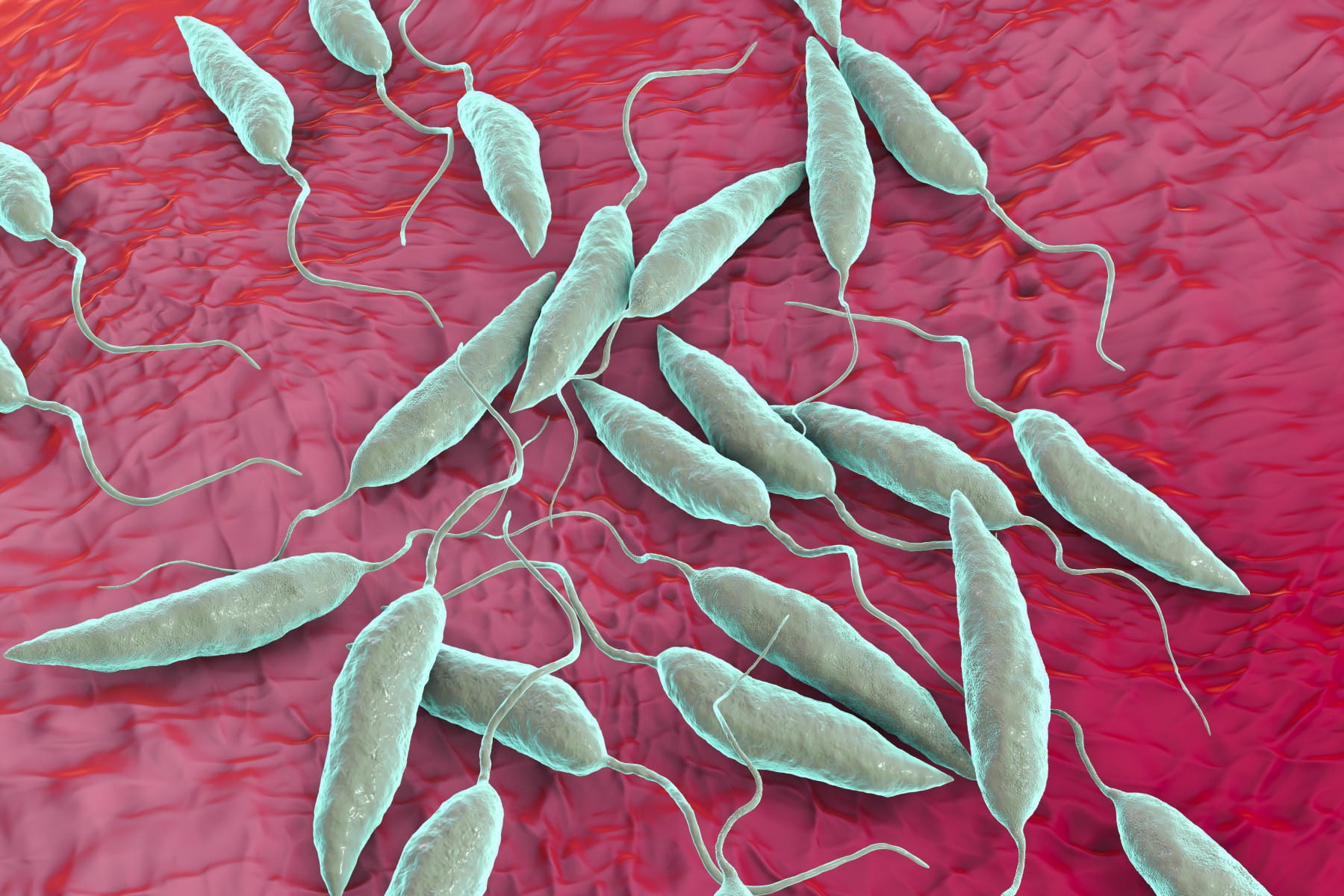
3D illustration of the Leishmania parasite which causes leishmaniasis. Credit Kateryna Kon via Shutterstock
Researchers at Ohio State and other universities are bringing together old practices and new technology to fight a parasitic skin disease.
Combining inoculation and gene-editing, the approach introduces a genetically weakened Leishmania parasite into the body to possibly serve as a safer vaccine against leishmaniasis, a skin disease that causes boils, sores and scars around the body, nose and mouth, and in serious cases, death.
Leishmania parasites are found in warm climates such as in India and Columbia but have entered the southern U.S. due to rising temperatures, Greg Matlashewski, a professor of microbiology and immunology at McGill University in Montreal, said.
Matlashewski said about 50,000 people die each year from the disease. Those who survive have permanent lesions on their faces and bodies.
“The parasite goes into the visceral organs — the liver, the spleen, the bone marrow — and it basically destroys these organs and people die from this infection,” Matlashewski said.
It especially affects impoverished groups of people — something Dr. Abhay Satoskar, a professor of pathology and microbiology in the Department of Microbiology at Ohio State and co-lead investigator for the research team, said he learned while working during an outbreak of leishmaniasis among Syrian refugee children. The Centers for Disease Control and Prevention classifies it as a Neglected Tropical Disease because it does not get the same attention and funding as other diseases like malaria.
“It makes you realize how privileged we are in this country,” Satoskar said. “It’s a real eye-opener, to see the suffering and use a different perspective.”
The new approach to treatment will soon enter the first phase of human trials as the disease, commonly found in tropical regions, makes its way into the southern U.S.
“After malaria, amongst the parasitic diseases, leishmaniasis is the second highest in the amount of fatalities or disability adjusted lives,” Satoskar said.
Satoskar said before gene-editing, the traditional immunization practice introduces a non-weakened Leishmania parasite into the body. This method can still cause a person to contract the disease and have severe symptoms.
That is where CRISPR comes in.
CRISPR — or clustered regularly interspaced short palindromic repeats — can cut out genes and alter DNA to create a live, weakened parasite that builds human resistance but does not produce symptoms, Matlashewski said.
“CRISPR worked beautifully,” Matlashewski said. “It only cut out the gene we wanted to cut out.” As a result, Matlashewski said, the parasite could no longer cause leishmaniasis.
Phase I trials based on the study are expected to start in early 2022, but this can change due to COVID-19, Satoskar said.


